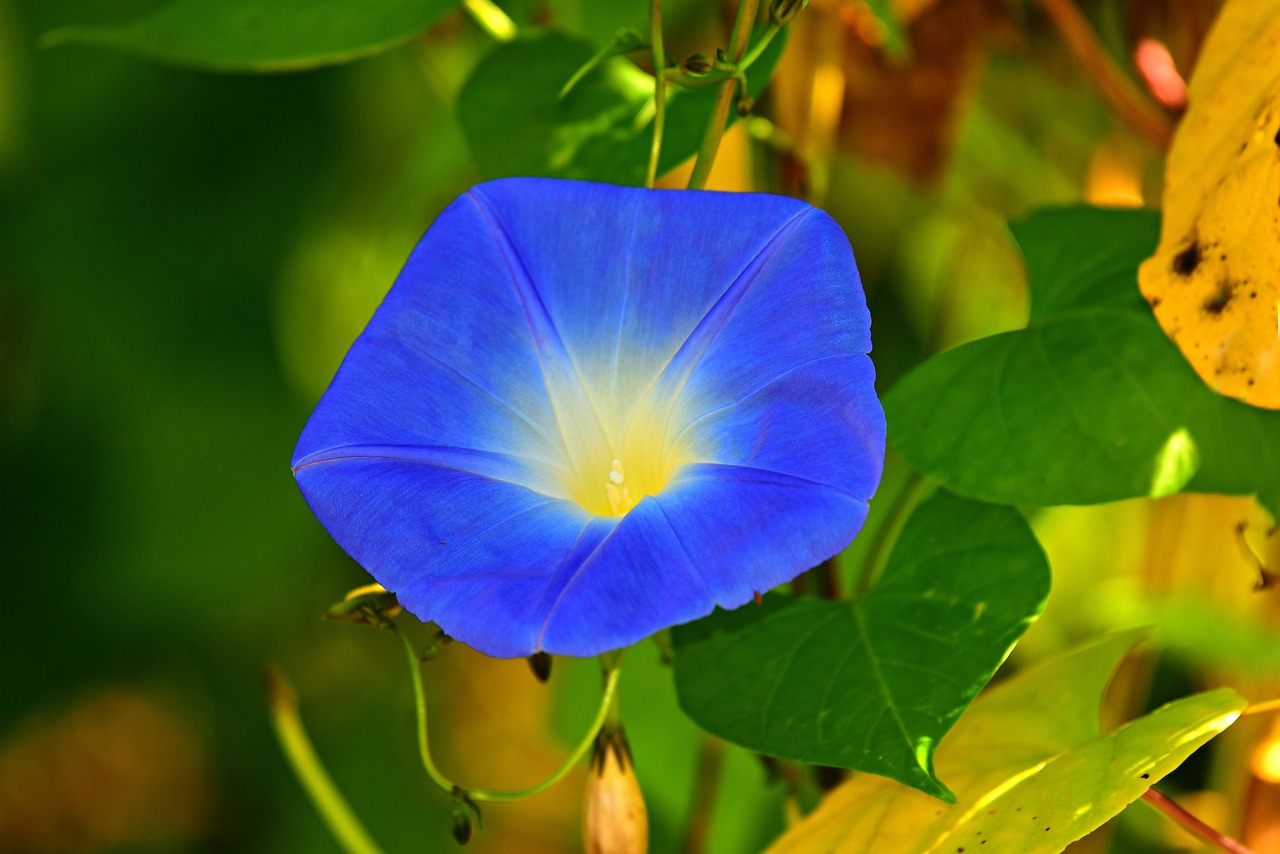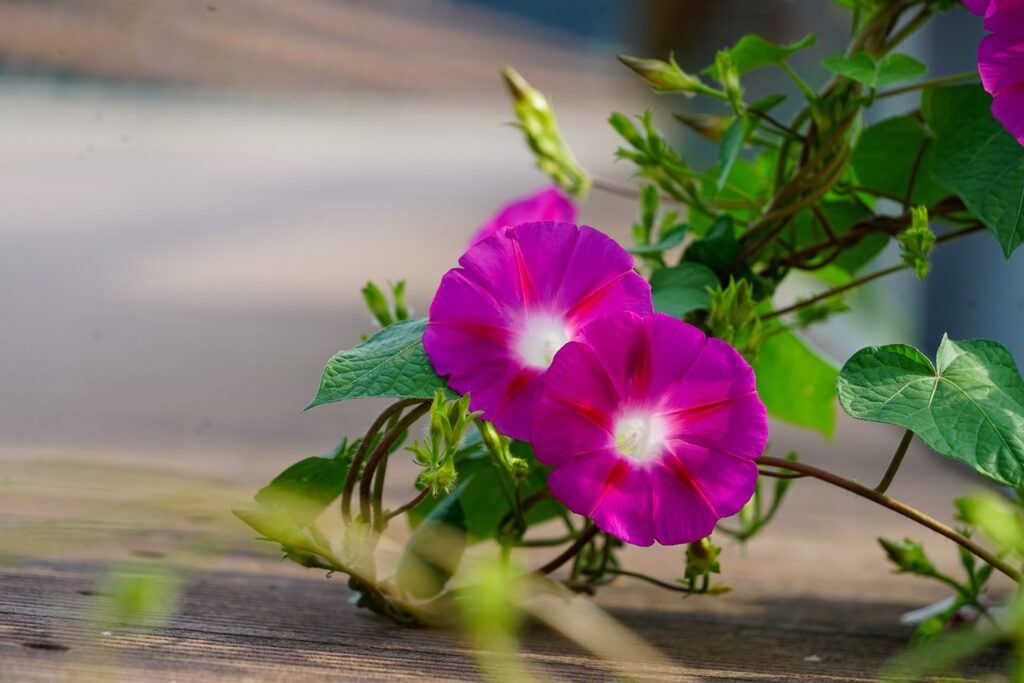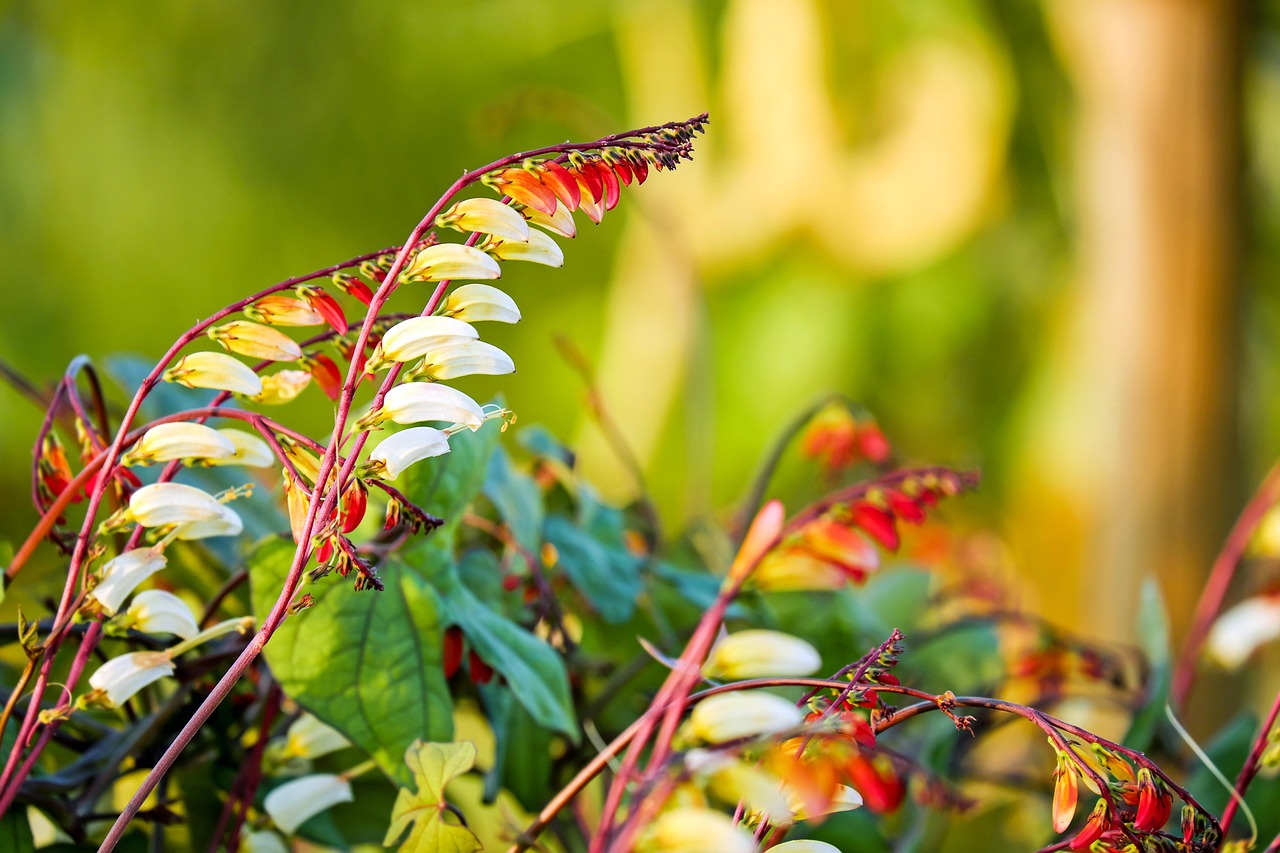Morning glory: Features and Care

The morning glory (Asagao) is a flower widely cherished in Japan as a symbol of summer. It’s especially popular for school summer projects and for growing in gardens or on balconies. Its vibrant colors and brief blooming period embody both fleeting beauty and elegance.
In this article, I will explore the morning glory’s basic information, cultural background, and gardening tips.
Basic Information
- Scientific name: Ipomoea nil
- Family: Convolvulaceae
- Origin: Tropical Asia
- Appearance: The morning glory is a climbing plant with heart-shaped leaves and large trumpet-shaped flowers. Its colors include blue, purple, pink, and white, and some varieties feature intricate patterns. The flowers bloom in the early morning and wilt by midday, which is why it’s known as a flower that adds color to summer mornings.
- Blooming season: Summer (July to September) is its peak blooming period, and it is often associated with the heat of summer.
Cultural Significance Around the World

In Japan, the morning glory holds significant cultural importance. During the Edo period, selective breeding led to the creation of many beautiful varieties, and even today, events such as morning glory markets (Asagao-ichi) are held in summer, where people gather to enjoy their beauty.
The flower’s meanings in Japanese culture include “fleeting love” and “the beauty of a brief moment,” reflecting the ephemeral nature of its blossoms, which resonates deeply with Japanese aesthetics.
In China, the morning glory, called “Luohua,” symbolizes good fortune and prosperity. Its climbing vines represent familial and interpersonal connections, making it a symbol of unity.
Historical Episodes
It is believed that the morning glory was introduced to Japan from China during the Nara period as a medicinal herb. Initially used for its medicinal properties, the morning glory later gained popularity as an ornamental plant.
By the Edo period, morning glory cultivation became a widespread hobby among the common people, and various unique varieties were developed. The flower quickly became a symbol of summer and has since been admired as part of Japan’s seasonal landscape.
The morning glory frequently appears in Japanese haiku and waka poetry, symbolizing the fleeting beauty of summer mornings.
Gardening Advice
Cultivation Guide
Morning glories thrive in sunny locations, making them ideal for gardens, balconies, or along fences. When grown in pots, you can enjoy their climbing nature by providing support poles or trellises for the vines to wrap around. Watering should be done twice daily (morning and evening) during hot summer days to prevent the soil from drying out.
To encourage germination, it’s best to soak the seeds overnight before planting. Planting should take place in spring to early summer, and the plant grows quickly, blooming beautifully within a short time.
Environment and Growing Conditions
Morning glories prefer well-drained soil. It’s important to keep the soil moist but not overly wet. Installing stakes or nets helps the vines climb as they grow. Applying fertilizer from the budding stage through the blooming period will encourage more flowers.
To prevent leaf scorching during intense summer heat, moving the plant to a partially shaded area or providing shade during the hottest part of the day can be helpful.
Conclusion

The morning glory is a quintessential symbol of Japanese summer, beloved for its beauty and fleeting nature. It is a relatively easy plant to grow, making it ideal for beginners. This summer, consider growing morning glories to enjoy their vibrant blooms and refreshing presence on summer mornings.

